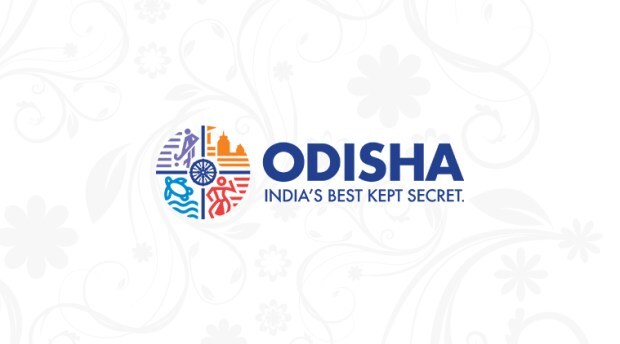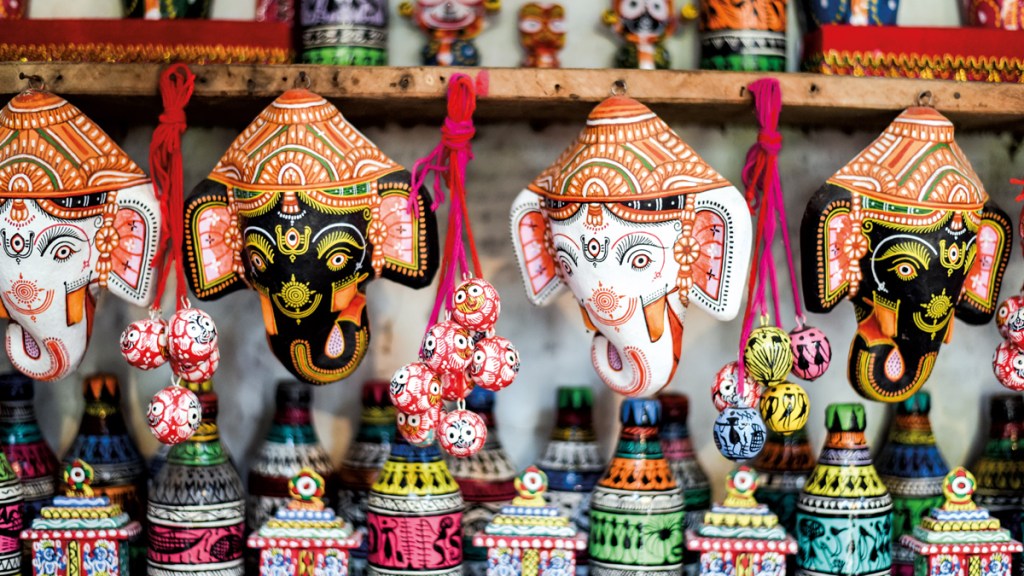Has a village greeted you with a neat row of houses, walls decorated with paintings?
Welcome to Raghurajpur! Situated about 10kms from Puri, Odisha’s famous pilgrim and beach town, Ragurajpur is the Artisans’ Village. Even without asking, you will realize you have entered an artist’s village where homes double up as workshops.
Pattachitra is an ancient form of painting made on a ‘treated’ piece of cotton cloth using natural colours. Palm leaf engraving, another famous art form of Raghurajpur, is made using needles or iron stylus on dried palm leaves, which are delicately strung together with threads to narrate a story.
The heritage village is as old as the Lord Jagannath temple of Puri. The Pattachitra is used in the Puri temple and the artisans are serving the Lord for many generations. Right from children to women and men in this village, everyone practices this ancient art form.
Pattachitra is derived from two words — patta (cotton cloth canvas) and chitra (meaning painting). Every year, during Debasnana Purnima, which marks the onset of one of the biggest festivals in Odisha — the Ratha Jatra — the trinity deities Lord Jagannath, Lord Balabhadra and Devi Subhadra take a bath with 108 pots of cold water to fight the heat of summer. After this, the deities supposedly fall sick for a period of 15 days known as ‘Anasara’. During this 15-day period, the deities are absent from public view and Pattachitra of the deities made by chitrakars of Raghurajpur is placed in the Puri Jagannath Temple for the people to pay obeisance. These paintings are called ‘Anasar Patti’.
Two to three rejected cotton sarees are used to make one patta. Tamarind seeds are soaked overnight, boiled and made into glue. This glue is used to stick the layers of cotton sarees/cloth, which is then polished with special white chalkstone. On this patta, a painting is made.
A pattachitra artisan uses five main natural colours to make the painting. These include red, black, yellow, white, and gerua (red-ochre) colours. Conch shells are used to make white colour. Hingulal stone from the hills in Odisha is used to make red colour. Diya kajal makes black colour. Geru stone gives the gerua colour. Yellow is derived from yellow stone called hartal. These basic colours are mixed to make other colours. Artificial colours are banned in the village.

Strolling along Raghurajpur’s narrow lanes, visitors witness artisans engrossed in their craft, meticulously sketching, painting, or working on intricate palm leaf engravings. The village exudes a sense of community and dedication to preserving its artistic legacy.
Undoubtedly, Raghurajpur stands as a testament to the enduring legacy of art and culture in India.

For more details about Green Tourism India Conclave, Click here.

